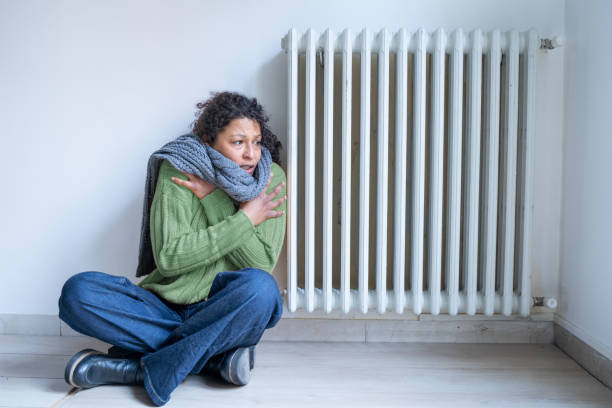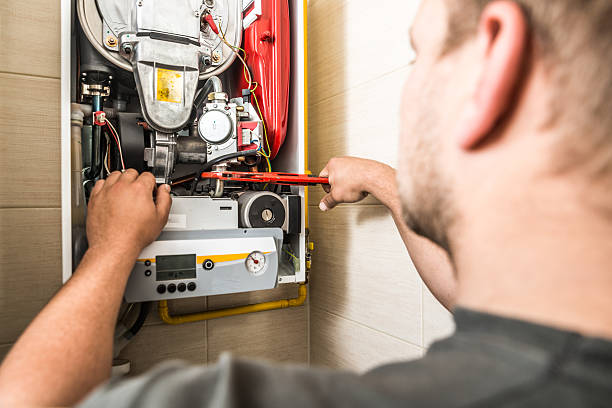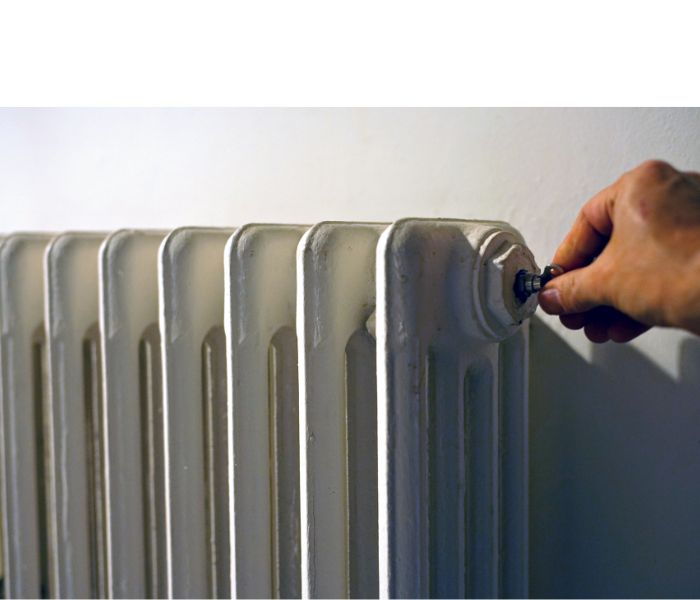Cold weather can be hard on your boiler, leading to a range of issues such as frozen pipes, condensate pipe blockages, loss of pressure, and thermostat issues. In this article, we’ll explain these common cold weather boiler issues, their symptoms, and preventive measures to keep your boiler running smoothly through the winter.
By following these steps, you can avoid costly repairs, ensure the safety and comfort of your home and extend the life of your boiler.
How to prevent cold weather boiler issues
Some steps to prevent boiler issues include: frozen pipes – ensure that any exposed pipes are insulated. A blockage in the condensate pipe can be avoided by regularly checking the pipe for signs of blockage. A loss of pressure in the system can be avoided by checking the pressure gauge regularly; thermostat issues can be avoided by replacing batteries in the thermostat regularly. Taking these steps can help to prevent boiler issues in cold weather.

Boiler issues in cold weather causes and fixes
Frozen pipes
When water inside the pipes freeze, it can cause them to burst and cause significant damage to your boiler and home. To prevent this from happening, make sure to insulate any exposed pipes and keep your home at a consistent, warm temperature.
Condensate pipe blockages
Cold weather can cause the condensate pipe, which carries waste water from the boiler, to freeze. This can lead to your boiler shutting down or not working properly. To prevent this, make sure the pipe is properly insulated and consider using a condensate pipe heater.
Loss of pressure
Boilers can lose pressure in cold weather, which can cause them to stop working. To prevent this, make sure to regularly check the pressure gauge and bleed any air from the system. You will need to top up the system with water after bleeding air out.
Thermostat issues
Cold weather can cause thermostats to malfunction, leading to your boiler not turning on or not reaching the desired temperature. To prevent this, make sure to keep your thermostat in a warm, draught-free area and consider upgrading to a digital thermostat.
How will you notice boiler issues in cold weather?

Here are some signs that you may notice if your boiler is experiencing issues during cold weather:
No heat or hot water. If your boiler is not producing heat or hot water, it may be a sign of a problem. This could be caused by a frozen condensate pipe, low pressure, or a malfunctioning thermostat.
Strange noises. If you hear unusual noises coming from your boiler, such as knocking, banging, or whistling, it may be a sign of a problem. This could be caused by a build-up of debris in the system or a malfunctioning component.
Leaks. You may notice leaks coming from your boiler or around the base. This could be caused by a frozen pipe or a malfunctioning component.
Strange odours. If you notice strange odours coming from your boiler, it could be a sign of a problem. This could be caused by a build-up of debris or a gas leak.
Warning lights or error codes. Many boilers have warning lights or error codes that can indicate a problem. If you notice one of these, it’s best to consult the manufacturer’s manual or call a professional for help.
If you notice any of these signs, it’s important to address the issue as soon as possible to prevent further damage to your boiler and keep your home warm and comfortable during the cold weather.

Costs of fixing boiler parts that break down in cold weather
The costs of fixing boiler parts that break down due to cold weather can vary widely depending on the specific issue and the type of boiler you have. Some common boiler parts that may need to be repaired or replaced due to cold weather include:
Frozen condensate pipe
Repairing or replacing a frozen condensate pipe can cost anywhere from £50 to £150.
Low pressure
Topping up the pressure on your boiler may cost around £50-£80, but if the problem is more severe, such as a leak on the system, it could cost more.
Thermostat
Replacing a thermostat may cost around £50-£150, depending on the type of thermostat and the complexity of the installation.
Pump
Replacing a pump may cost around £100-£300, depending on the type of pump and the complexity of the installation.
Valve
Replacing a valve can cost around £50-£150, depending on the type of valve and the complexity of the installation.
Which boiler issues can I fix myself?
If certain parts of your boiler have broken down due to cold weather issues, it is generally recommended that you have a qualified, Gas Safe registered engineer perform the repairs. This is because attempting to repair certain parts of your boiler, especially those that involve gas or electricity, can be dangerous if you are not familiar with the system.
It is possible that it may take longer for a plumber to respond to a pipe burst in the winter due to an increased demand for their services. The cold weather can cause pipes to freeze and burst, which can lead to more emergency calls for plumbers. Additionally, bad weather conditions such as snow and ice can make it more difficult for plumbers to reach a job site.
However, there are a few things you can do to maintain your boiler and prevent issues from arising:
- Check the pressure gauge. Checking the pressure gauge on your boiler is a simple task that you can do yourself. If the pressure is too low, you can bleed air from the system to bring it back up to the correct level.
- Bleeding radiators. If you notice that some radiators in your home are not getting hot, you may need to bleed them. This is a simple task that can be done with a radiator key.
- Replacing the batteries on a thermostat. If your thermostat is not working properly, it may be due to a dead battery. Replacing the batteries is a simple task that you can do yourself.
- Cleaning the boiler. Keeping your boiler clean can help to improve its efficiency and prevent issues from arising. You can clean the exterior of the boiler yourself using a damp cloth.

Keep a preventative boiler maintenance schedule
A preventative maintenance schedule is a plan for regularly inspecting and maintaining equipment to prevent breakdowns and prolong its lifespan. Here is an example of a preventative maintenance schedule for a boiler:
Monthly. Check the pressure gauge and bleed any air from the system if needed.
Every 6 months. Have a qualified, Gas Safe registered engineer perform a thorough inspection of the boiler, including checking the burners, heat exchanger, flue, and controls.
Annually. Have a qualified, Gas Safe registered engineer perform a full service on the boiler, which should include cleaning, adjusting, and testing all of the components.
Regularly. Insulate any exposed pipes, clear debris from the condensate pipe, and keep the thermostat in a warm, draught-free area.
It’s also important to keep an eye out for unusual noises, leaks, strange odours, warning lights or error codes, as these may be a sign of a problem that needs to be addressed.
Will home insurance cover boiler breakdown and burst pipes?
Home insurance policies typically cover the cost of damage caused by a boiler breakdown, including burst pipes and water damage. However, coverage can vary depending on the specific policy and the cause of the breakdown.
Most standard home insurance policies will include coverage for sudden and accidental damage caused by a boiler breakdown. This typically includes damage caused by burst pipes, leaks, or other issues related to the heating system. It’s important to check your policy document to see exactly what is covered and what the limits are.
However, if the breakdown is caused by lack of maintenance, the insurance may not cover the cost of the repair. In this case, the insurance company may consider it as a preventable loss and not covered under the policy.
It is important to note that insurance policies have terms and conditions, and you may have to pay an excess, or a portion of the cost of the repair. It’s always a good idea to check your policy document and to contact your insurer to confirm what is covered and what is not.
Summary
Cold weather can have a significant impact on your boiler’s performance and it’s important to take the necessary precautions to prevent issues from arising. Insulating pipes, using a condensate pipe heater, checking pressure gauge, maintaining the thermostat in warm area, and upgrading to a digital thermostat can help to keep your boiler running smoothly during the winter months.
Read related articles:
